BMW M5 Competition Vs Porsche Panamera GTS Comparison

Two driven axles, four doors, six-figure asking price, eight cylinders.
If you stopped counting right there, little would separate the 2021 BMW M5 Competition and Porsche Panamera GTS. Both of these big sedans are capable of frankly indecent amounts of speed, all the while cocooning four adults in a den of leather and comfort. They are the latest and greatest in the long line of sport sedans from their respective creators.
Get a Quote on a New BMW M5 Competition or Porsche Panamera GTSThere’s another important number at play here, though: 164. That’s the amount of ponies the 453-horsepower Porsche gives up to its Teutonic rival. Oh, Porsche will sell you a few different Panameras that will eclipse the M5’s 617 horsepower, but if you’re looking to stay in roughly the same price neighborhood, its this GTS that comes closest. Those three letters typically translate to a sharper drive than regular Porsches, but without the ballistic firepower of the Turbo models—or the M5.
What we have here is a 1,070-horsepower battle of philosophies. Which is better, balance or brawn?
Styling
M5: If it weren’t for the bright red paint, the M5 would almost be understated. The big four-door benefits from the same visual updates as the rest of the 5 Series lineup this year, which translates to new lighting units at both ends. The distinctive blue elements of the (frickin’) laser headlights are cool, and the new taillight design has a real depth to it. 20-inch alloy wheels are hard to miss, but even regular 5 Series models come with rolling stock this size these days. A small fender vent and discreet carbon spoiler on the trunk barely hint at the sheer power this thing produces. Only once you clock the iconic badge—or the signature quartet of cannons protruding out from the bumper—is it clear this is the ultimate 5 Series.
SEE ALSO: Genesis G80 vs BMW 5 Series ComparisonBut this is in a shouty Imola Red hue. The M5 is the extrovert of this pair, the devilish paint highlighting its gaping front bumper and hunkered-down stance. The BMW demands attention from those within a couple hundred feet, though maybe that’s because of the optional titanium exhaust…
Panamera: By comparison, the Panamera is dainty, almost shy. It’s quite pretty now; Porsche nailed the looks of this second-generation model after the awkward and ungainly original. The Panamera saw its own freshening up for 2021, though it was even more subtle than the Bimmer. A previously optional front bumper is now standard, and Porsche tweaked the taillights. That’s … about it. The Panamera’s LED light signature is unmistakably Porsche, as viewed from either end.
This tester comes bathed in a new Cherry Metallic paint, which contrasts nicely with the pretty 21-inch wheels. Both are extra-cost options—a theme that will continue throughout this comparison.
Bottom Line: The M5 is mean, a big red linebacker just waiting to blitz forward. The Porsche is subtler; depending on preference, it might be too much so. As ever with these things, tastes will vary.
Powertrain and Driving Feel
M5: Nothing quite prepares you for the first full-throttle lunge in an M5. I thought I knew what I was in for: I’ve felt the rush of a Taycan Turbo, after all. Nope. The eight cylinders underhood must be pumping out at least 30 more horsepower than BMW quotes. This thing rips a hole in the space/time continuum, and it’s relentless about it. There isn’t a hint of the power tailing off at any road-legal speeds, even at higher revs.
SEE ALSO: 2020 Porsche Taycan Turbo Review: Truly ElectrifyingAnd the sound. The M5 is uproariously loud on start-up, thanks to the optional titanium sport exhaust. Even if the Panamera sounds just that bit sweeter, you’d never know it if they’re parked near each other. The M5 drowns out anything near it with a maniacal mix of thunder, amped-up base, and (only slightly) miniaturized Godzilla. The pops and bangs on the overrun are entirely OTT, causing passersby to jump.
The eight-speed automatic is good, even if it can’t match the sheer shift speed of the Panamera’s PDK. A small control on the shifter top alters shift speed, but it also introduces a level of low-speed jerkiness in its most aggressive setting.
Both Kshitij and I are happy for those two M buttons on the steering wheel. (As an aside though, why are they not the same font as the M badge?) The M5 allows the driver to map their favorite suspension, transmission, engine, and traction control settings to each, offering up two ideal pick-and-mix selections a single tap away. When I had the M5, I kept M1 for fun backroad duty, and M2 was for rear-drive mode. The latter was explored precisely once: to go single-axle means turning off the traction control, and that just isn’t a combination I wanted to use regularly on public roads.
In its default mode the M5 can feel ever so slightly sloppy, like the suspension is still stretching out before the big game. Move to Sport and it’s at its apex-hunting best; further and it just gets too stiff. The M5 changes direction quickly, but the steering lacks the clarity of the Porsche’s helm. Around corners, the M5 always feels like what is is: a large, heavy sedan. It has grip for days, but it can’t shrink around you, and you need to factor in those extra half-seconds for the suspension to catch up to where the engine has just rocketed the rest of the car.
Panamera: There’s no hope of the Panamera even coming close to the M5 in a straight-line battle. Of course, the GTS is still quicker than most anything else on the road. But after the unbridled ferocity of the M5, 453 horsepower has rarely felt so … normal.
Luckily, a sweet soundtrack follows the Panamera wherever it goes. The 4.0-liter turbo V8 lacks the wall-shaking bombastics of the BMW’s bent-eight, but it’s an oh-so-smooth engine. The cultured note hardens nicely in the upper half of the rev range, and the PDK executes perfect shifts every time, whether left to its own devices or instructed via paddles. So good is it, that you begin to wonder if the Turbo’s extra horsepower is even really necessary.
Once the corners start arriving, the Panamera truly shines. The torque vectoring and rear-wheel steering effectively chop a foot or two out of the length and wheelbase. It’s startling how composed the GTS remains, no matter what the road throws at it. Helping matters is that Alcantara-clad steering wheel, weighting up appropriately and always sharp in its responses. The Panamera never feels too accomplished either: it keeps you involved in the process of unwinding your favorite knotty backroad.
Ratcheting up the aggression via the wheel-mounted dial has the Panamera feeling more like a front-engined 911. Truth be told, Sport Plus is probably too stiff for the road, but even then, it breathes with the surface better than the M5.
Bottom Line: The M5 makes us laugh more, sometimes as a way to hide the fright. Kshitij compares it to a liter-bike: “in theory [it] can get you from A to B but there are compromises you will have to make.” An engine nearly capable of light-speed does put a tougher strain on the M5’s suspension, though.
Interior and Cargo Space
M5: The M5 has all the hallmarks of a modern BMW inside. The dashboard design is sober and functional, just as it was in the 540i we last drove. Only here, the M5 ratchets up the contrast stitching, leather, and suede quotient. There’s still the same overly-thick steering wheel, only this time it’s sprouted two little red M buttons. The two-tone treatment adds just enough visual spice to the package, brightening up the interior. It’s necessary, since this Competition tester features the pretty carbon fiber roof, meaning no sunroof here.
The front seats are supremely comfortable, with a huge range of adjustments and just the right level of bolstering. We like the light-up M5 badge in the headrests—and the ability to run the heat and ventilation features simultaneously. Rear-seat passengers will find plenty of room to stretch out, too, and powered sunshades all around.
Overall fit and finish is generally excellent. The M5 doesn’t feel quite as special as the Panamera, but given its massive price advantage, that’s somewhat expected.
Panamera: This particular Panamera has a distinctly more straight-up luxury feel than the Bavarian bruiser. The classic beige leather and brushed aluminum trim is classy, with just enough carbon fiber and Alcantara to remind you this is a GTS. ” [The] Alcantara steering wheel is the best in business,” proclaims Kshitij, praising it for what he calls “the right girth and radius.” That soft-touch wheel frames the classic central-tachometer instrument panel, although these days the rest of the display is digital.
SEE ALSO: Why the Taycan is the Best Porsche to Drive From Toronto to Ottawa and BackThere’s a pleasant consistency to controls of the Panamera. Everything twists and clicks with the same satisfying level of tactility that Porsche has long been known for. My one complaint is center console storage, which always feels awkward to open thanks to a button right beside the driver’s stomach. The Panamera also feels a little more snug than the M5, no matter which row you’re in.
The Panamera’s seats are ever so slightly less aggressive than the M5’s. They still hold you firmly in place during cornering, and remain supremely comfortable on longer slogs. Rear-seat passengers can enjoy some supportive buckets as well, though this does mean the Panamera is a strict four-seater, not five. In place of an awkward middle perch is a full central infotainment setup.
Bottom Line: Considering its extrovert personality, the M5’s interior is almost business-like. It’s the more spacious option, too. The Porsche feels more special however, with higher-quality materials and a much more inviting back seat. The hatchback also provides an added dash of practicality. We’re calling it in favor of the Panamera here.
Tech and Features
M5: BMW has thrown nearly everything in its arsenal at this M5 tester. The latest version of iDrive sits in the larger 12.3-inch central screen, offering snappy responses and crisp graphics. It might take a little longer to learn initially, but it’s the more intuitive system, while also being more customizable. Crucially, it also allows wireless connection with both Android and Apple devices.
The BMW’s strengths lie beyond its infotainment setup. The massaging front seats of our tester were welcome during an April that never quite knew which season it wanted to be. On a similar note, the heated and ventilated front seats were more effective than the ones in the Panamera. We’re big fans of BMW’s adaptive cruise control system, which is not only very natural in its responses, but also features a trick instrument panel display. The screen shows the M5’s general lane positioning, and can accurately portray what sort of vehicles are in the immediate vicinity. Clever.
SEE ALSO: 5 Ways the 2020 BMW M2 CS Marks the Glorious End of an EraWe both agreed the BMW’s Bowers and Wilkins sound system was the much better setup. A built-in WiFi hotspot was also a welcome upgrade, turning the M5 into a mobile office on more than one occasion. The BMW’s surround-view camera is top-notch, and works in conjunction with the Drive Recorder, which can record up to 40 seconds of video either on command or in the case of an accident.
I even grew to kinda, sorta like the gesture controls during the week, specifically to quickly raise or lower the audio volume.
Panamera: Porsche’s infotainment setup is undoubtedly slick, but it lacks the grace and pace of iDrive. Kshitij notes that if you’d rather not poke and prod at the screen itself, the scroller is further away from the driver than the iDrive dial is in the M5. The central console’s haptic feedback controls are a satisfactory compromise between design and functionality. Physical buttons are still best, but at least this way the driver gets feedback of some sort.
Even though it comes in at substantially more money than the BMW, the Porsche is missing some of its countryman’s cooler tech. The Bose sound system can’t match the B&W unit in the BMW, for instance. There are no massaging seats, either. Porsche’s InnoDrive adaptive cruise control is a good example of the tech, but we found it less smooth in its operation than the equivalent system in the M5. We appreciate Porsche offering Night Vision, however.
The back-seat infotainment screen is admittedly a big plus. It doesn’t add anything to the Panamera’s sport sedan credentials, but it does clearly give backseat riders a taste of luxury. Four-zone climate control will do that. The driver can also lock the rear screen if there are kids in back.
Bottom Line: The BMW has the measure of the Porsche here, twirly-finger gesture controls and all.
Pricing
M5: The days of the number on the trunk matching the number of digits in the price are gone. If you want an M5, the price of entry is now $104,495, including destination. Graduating to the Competition bumps that to $112,095—in Canada that’s the start of the M5 lineup, at $124,480 CAD. Our Canadian-spec tester rings up at approximately $137,895 ($152,730 CAD), after a liberal walk of the options list. In Canada, the pucker-inducing $21,500 CAD Ultimate Package includes nearly everything, from the powered sunshades, soft-close doors, Laserlight headlights, various driver assists, Individual Paintwork, and massaging front seats. It also includes a WiFi hotspot, Bowers and Wilkins sound system, wireless charger, and gesture controls. The epic titanium exhaust is extra ($7,240 / $6,000 CAD), and it’s a sure-fire way to make your neighbors hate you.
Panamera: An absolute zero-option Panamera GTS starts at $130,650 ($148,900 CAD). We doubt you’ll find many of those unicorns, however. This tester rocks up at $156,150 ($178,720 CAD), with a fairly restrained sprinkling of options. The rear axle steering ($1,650 / $1,880 CAD) and PDCC Sport system ($5,010 / $5,710 CAD) contribute to the GTS’ fine dynamics, so we wouldn’t say no to them. Is the Premium Package ($5,100 / $5,820 CAD) really necessary, with soft-close doors, four-zone climate control, and upgraded ambient lighting? Less so. The night vision feature is very cool (and useful), but only if you’re regularly far away from the city.
Bottom Line: Neither of these six-figure sedans is what you’d call a bargain, but the BMW makes a strong case for itself. It’s substantially cheaper than the Panamera, and also a good chunk below the (only slightly prettier) M8 Gran Coupe. This is an easy category win for the Bimmer.
Verdict: 2021 BMW M5 Competition vs 2021 Porsche Panamera GTS Comparison
It should not be surprising that, given their specs and price, both the BMW M5 Competition and Porsche Panamera GTS are two sensational machines. It’s true that you can’t go wrong with either—but you’re not reading this for that sort of cop-out conclusion, are you?
The BMW is semi-friendly monster. Its various driving modes and settings provide more potential combinations than Subway, ranging from compliant cruiser to howl-at-the-moon madness. Switch to two-wheel-drive mode and the M5 will remind you that no two contact patches, no matter how sticky, can truly contain what is most likely more than 650 horsepower. The Bimmer always feels its size, making you acutely aware of how much space it would need should things go pear-shaped. Hurried down a tight road, the suspension can feel a half-step behind that superstar engine, even on its stiffest setting. The M5 will make you laugh out loud on the straights, and on a race track, its keys are the ones we’d jump for.
But we seriously doubt many M5 or Panamera owners are regularly tracking their cars. Away from the circuit, where driving enjoyment must happen within the limits of the road, the Panamera is the more rewarding drive. Its body control is so absolute, its steering so sweet, that the Panamera always feels like a willing partner on the drive, instead of the sometimes-contentious M5. Even with the higher price tag, the Porsche is the one we’d rather live with.
Become an AutoGuide insider. Get the latest from the automotive world first by subscribing to our newsletter here.

Kyle began his automotive obsession before he even started school, courtesy of a remote control Porsche and various LEGO sets. He later studied advertising and graphic design at Humber College, which led him to writing about cars (both real and digital). He is now a proud member of the Automobile Journalists Association of Canada (AJAC), where he was the Journalist of the Year runner-up for 2021.
More by Kyle Patrick



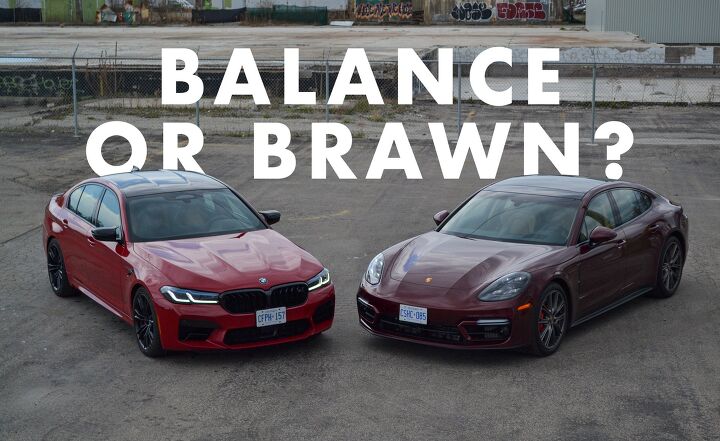
































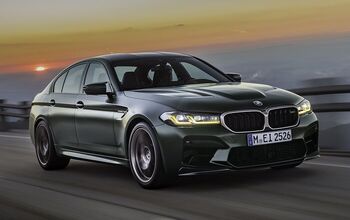
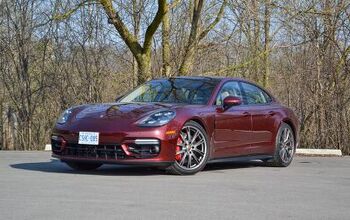




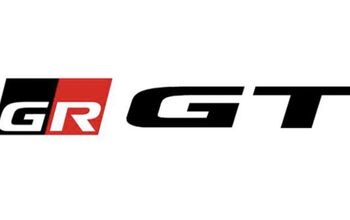


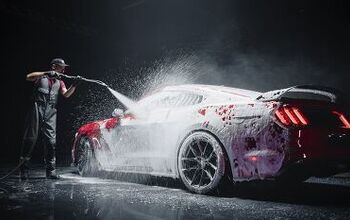

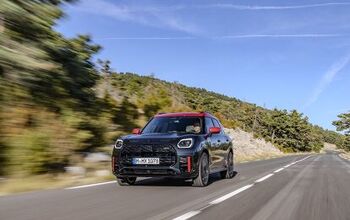
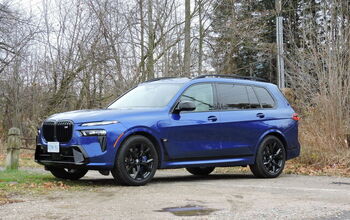
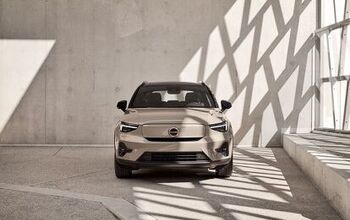
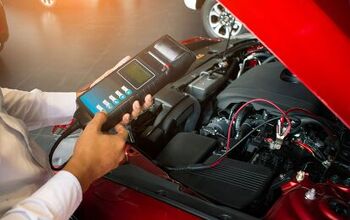
Comments
Join the conversation